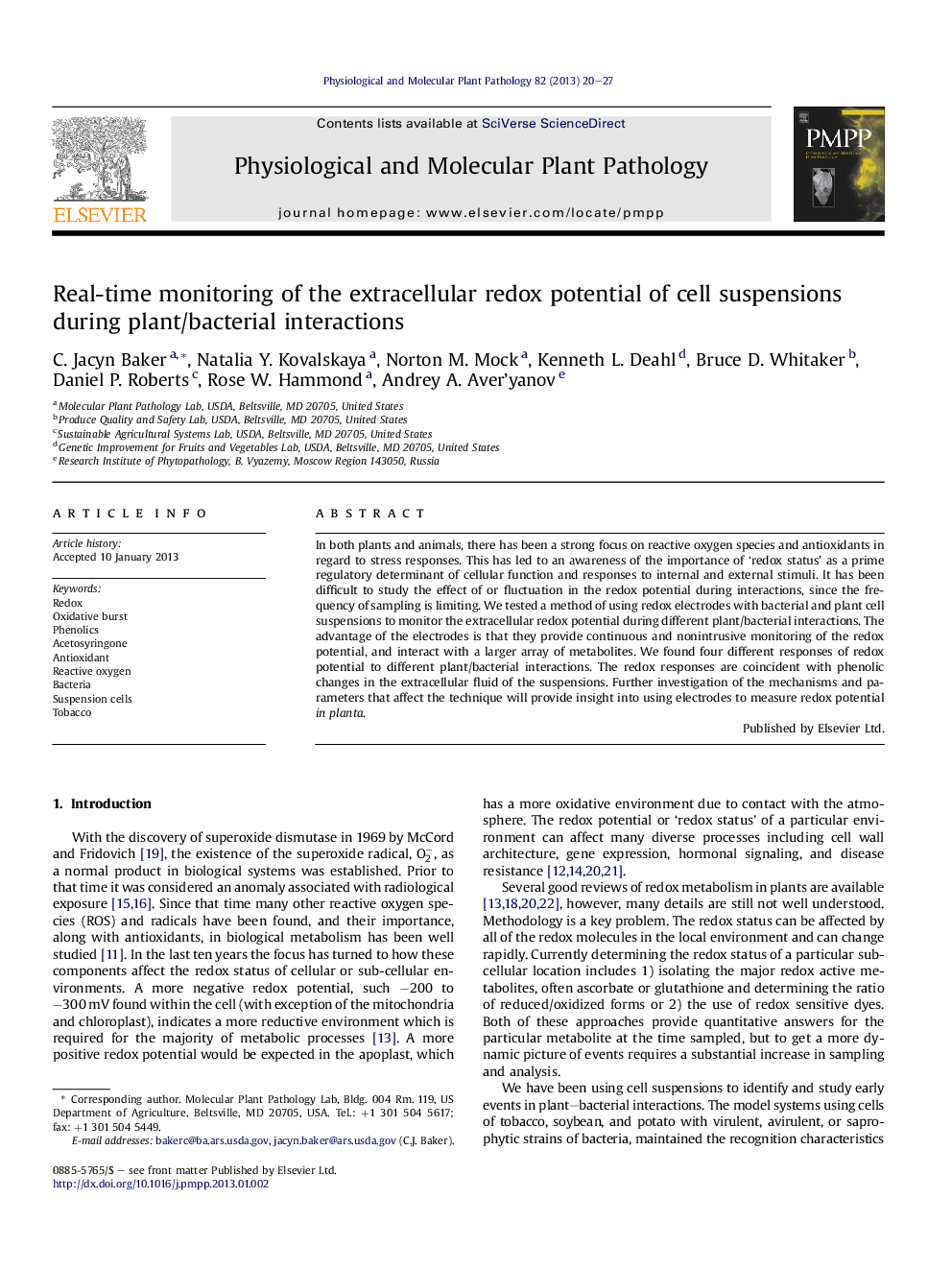| Article ID | Journal | Published Year | Pages | File Type |
|---|---|---|---|---|
| 2836405 | Physiological and Molecular Plant Pathology | 2013 | 8 Pages |
In both plants and animals, there has been a strong focus on reactive oxygen species and antioxidants in regard to stress responses. This has led to an awareness of the importance of ‘redox status’ as a prime regulatory determinant of cellular function and responses to internal and external stimuli. It has been difficult to study the effect of or fluctuation in the redox potential during interactions, since the frequency of sampling is limiting. We tested a method of using redox electrodes with bacterial and plant cell suspensions to monitor the extracellular redox potential during different plant/bacterial interactions. The advantage of the electrodes is that they provide continuous and nonintrusive monitoring of the redox potential, and interact with a larger array of metabolites. We found four different responses of redox potential to different plant/bacterial interactions. The redox responses are coincident with phenolic changes in the extracellular fluid of the suspensions. Further investigation of the mechanisms and parameters that affect the technique will provide insight into using electrodes to measure redox potential in planta.
► We used redox electrodes to monitor interactions of bacteria/tobacco cell suspensions. ► Responses ranged from no response to short or prolonged rapid increases in redox potential. ► In most interactions, the response was sensitive to bacterial concentration.
